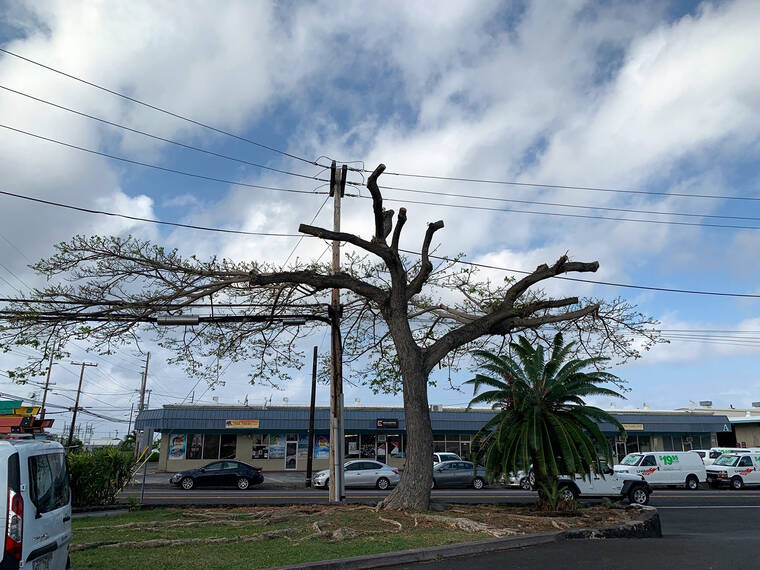Tropical Gardening: Hurricane season requires special care for island trees
June is the beginning of the hurricane season in the tropical Pacific north of the equator. It generally lasts for six months but with global warming the storms may even develop later. According to the meteorologists studying our Hawaiian weather, it looks like a La Nina year. We will likely have fewer storms than during an El Nino year. This is due to cooler than normal ocean waters in the eastern and central Pacific this year.
These conditions are great when it comes to minimal wind damage to our landscapes, but it may mean dryer than normal weather that can be a problem for leeward sides of the island.
ADVERTISING
Some folks ask why bother to have trees at all? They think no trees, no problems. However, remember trees, shrubs and other vegetation are the lungs of the planet, so the more the better especially in urban and suburban settings.
The challenge is that some of our ancient historical trees like the banyan at Kona’s King Kamehameha Beach Hotel get so big we tend to over prune them to keep them in scale.
This amazing tree is the first thing visitors see as they enter by ship at Kailua Bay so it is important that trees like these are properly maintained. The spectacular banyans that frame Banyan Drive in Hilo are another example of unique trees needing love and attention. Certified arborist or companies that specialize in tree care can do the job without negatively affecting the health of the trees. The loss of these truly amazing members of the fig family would be tragic.
The Great Banyan on the grounds of Kona’s Hulihe‘e Palace is another that is now protected but a few decades ago, there was concern it might be cut down. The Morton Bay Fig at Banyan’s surfing spot was not so lucky. It is suspected that someone poisoned the tree. The excuse used was that it was blocking the view.
Fortunately the Hawaiian Community demanded that the tree be replaced although it will take many years to achieve the proportions of the original tree. Seedlings of the original tree were planted at Kona Cloud Forest Sanctuary in Kaloko Mauka and because of the ideal environment are now almost 100 feet tall in just 35 years.
By proper pruning, we increase light availability to understory plants. Since some light is essential to plant vigor, it is a good idea to open up these heavy canopied trees.
Even when we are careful to select the right trees for the landscape, and shade lovers for underneath, there comes a time when we must consider pruning.
Whatever the natural form is in the beginning, it should be maintained, and this means individual handling of each problem. Trees should be pruned in such a manner as to remove enough of the canopy so as to allow gale force winds through the tree. Most tree experts agree that heavily topped or hat racked trees will be more susceptible to disease and insect attacks, so this practice is not recommended. Pruning should be done for a purpose, such as to maintain the natural shape, remove diseased or awkward branches, or to reduce the size of a vigorous grower.
When it comes to fertilization, it is better to keep it on the light side until late fall. Then an application of a complete fertilizer containing nitrogen, phosphorus and potassium plus trace elements will carry trees until spring.
Trees are part of the beauty of our islands. They supply oxygen and sequester carbon. They also cool the environment as our weather is getting warmer and warmer. Rather than destroying these valuable assets, work with them. Proper selection of plants to grow under their protective canopy is important. Proper pruning, fertilization and irrigation are a must, but it is much better than paving over paradise.


